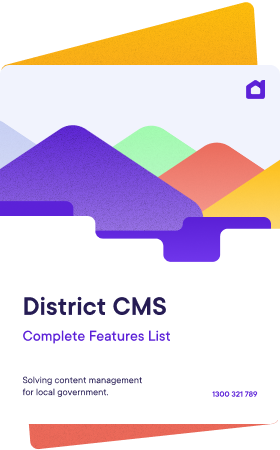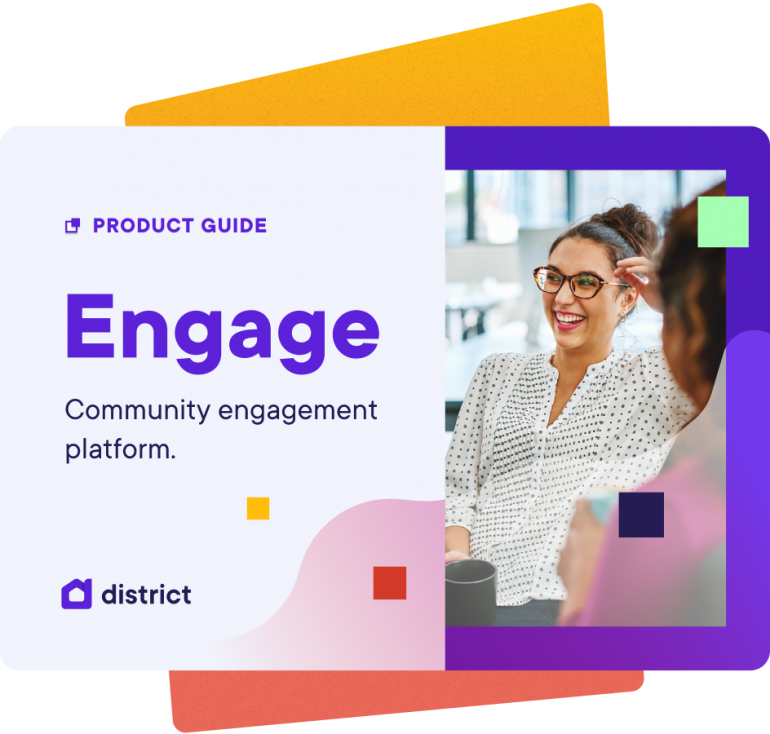A strong and effective community engagement plan is an essential part of any project, large or small. Taking the time to craft a meaningful and inclusive engagement strategy with the local community will deliver valuable insights into local knowledge and experience, and help ensure the project outcomes meet the needs of the whole community.
Listening and learning from a broad range of community stakeholders can also help you avoid costly mistakes, while helping to strengthen the relationship between local government and the community.
Digital engagement platforms like District Engage can help streamline and strengthen community consultations. Thanks to innovative engagement tools and reporting widgets, District Engage helps organisations connect with their community members in real-time, gather feedback and valuable insights, and collaborate with residents to strengthen project outcomes.
In this article, we’ll take a look at the steps you need to take to build an effective community engagement plan.
Step 1: Goals and objectives
Before you begin a public consultation project, it’s important to carefully consider your goals and objectives, for example: What do you want the public engagement process to achieve? What issues do you want feedback on? Which stakeholders do you want to engage with? How might the engagement process affect project outcomes? How does it align with government policy or goals?
A clear sense of purpose and scope will help to ensure the engagement process is not only transparent and aligned with government goals, but will also help you design a plan that is relevant, effective and focused on outcomes.
Step 2: Identify your audience
Once you have defined your goals and objectives, the next step is to identify your target audience. Who do you want to engage with?
Try to target as many members of the community as possible, including people with accessibility issues such as age or disability, and under-represented or marginalised groups in order to bring as many different perspectives to the table as possible. Including a wide variety of tools, such as surveys, social media polls, face-to-face meetings and online forums in order to maximise a diverse range of voices.
Step 3: Select a Digital Engagement Platform
Digital engagement platforms, like District Engage are powerful tools that can help you connect with your target audience, gather feedback and deliver valuable insights. Look for a simple-to-use interface for engagement managers and the public alike, with tools such as surveys, polls, questions and ideation forums giving communities the opportunity to engage and interact with a variety of public and commercial projects
Our platform for example offers additional benefits including an innovative team structure that replicates the permissions and approvals workflow of many government agencies, and enables close collaboration across teams, departments and multi-department projects. In addition, the platform offers engagement managers simple-to-use reporting and analytics functionality that make it easy to gather valuable insights into community sentiment and attitudes.
You can find out more about District Engage here.
Step 4: Develop an Engagement Strategy
Once you have defined the purpose and scope of your engagement project, have an understanding of your target audience, and chosen a digital engagement platform, the next step is to develop an engagement strategy. A solid communication strategy will help maximise community engagement into the project, while cultivating an atmosphere of transparency and accountability.
Consider the specific steps of the engagement process, and a timeline for these activities. Your communication strategy should align with the key goals and objectives of the project and include a variety of channels including social media, local media and email. This communication strategy should include a pre-engagement education campaign to build momentum and “buy-in” amongst the community.
Step 5: Implement Your Engagement Plan
The next stage is to implement your community engagement strategy. A community engagement project might include:
- Participation tools such as surveys and polls, that range from simple yes/no responses to complex multi-field questionnaires and step-by-step validation
- Space for project managers to answer direct questions from the public
- Community updates (notifications to interested parties)
- Links to relevant documents or resources
- Links to community events such as forums, BBQs and drop-in information sessions
- Mapping tools for community members to comment on specific geographical locations
- Ideation tools for fostering genuine discussion and collaboration amongst government and community members.
Step 6: Evaluate Your Engagement Plan
As a last step in the process, it’s essential to evaluate the effectiveness of your engagement plan. Assess the reach of the engagement activities, the participation rates, and any outcomes that have been achieved. Analyse the data gathered through your reporting tools to identify ways to improve your engagement practice, and identify opportunities for future engagement.
Finally, update the community about the overall findings. This will demonstrate that their contributions are valued and have had an impact in the overall project. This final step helps to foster trust and a willingness to contribute to future engagement projects.
Building a community engagement plan requires a thoughtful, strategic approach, which can be made easier with the help of a digital engagement platform like District Engage. By following these steps, engagement managers can design community engagement plans that are relevant, effective, and focused on achieving meaningful outcomes for their communities.
If you would like to find out more about how District Engage can help streamline your community engagement projects, book in a demo today!



